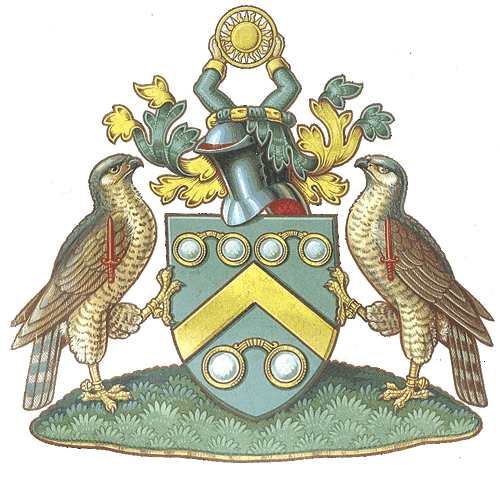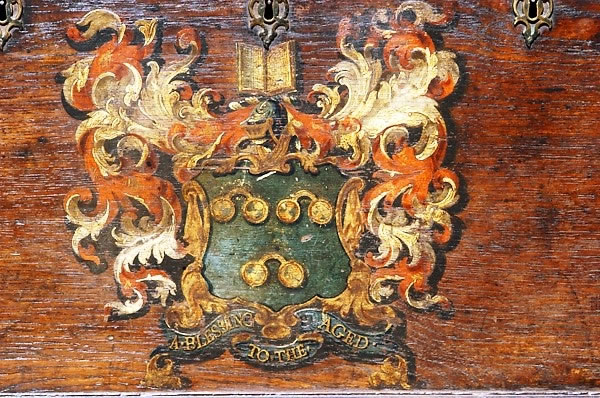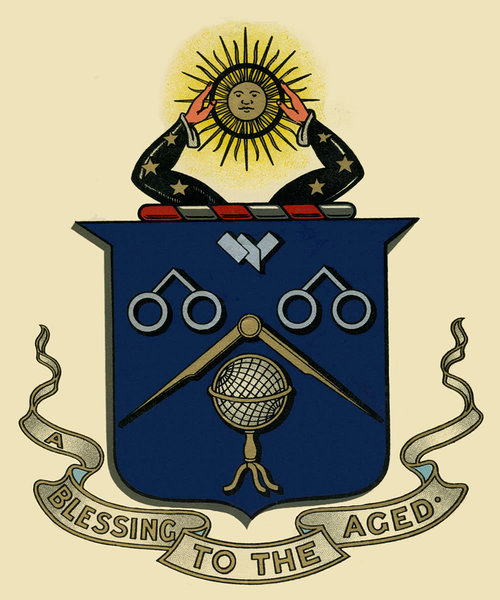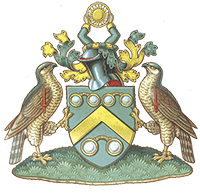Achievement of Arms

The Worshipful Company of Spectacle Makers was incorporated by Royal Charter on 16th May 1629, but it did not approach the College of Arms for an official “Achievement of Arms” until the 20th Century.
It was not until 1949 that the Company opened negotiations with the College of Arms for an official grant. This was made on 18th September 1950, after a degree of argument, and is properly described as follows:
Blazon: Vert a chevron or between three pairs of nose-spectacles proper framed of the second.
Crest: On a wreath or and vert two arms embowed vested vert cuffed or the hands proper holding a sun in splendour within an annulet gold.
Mantling: Vert doubled or.
Supporters: On either side a falcon proper belled or charged with a sword erect gules.
Before then, the Company used two unofficial coats of arms. The earliest reference to the first of these appears in W. Maitland’s “History of London”, published in 1739. It is possible that this device was adopted, without authority, between the years 1629 and 1666, but unfortunately the records for that period were lost in the Great Fire.
On the 27th June 1771, a Mr. Kittle was paid the sum of £5 12s. 6d. for painting the Arms of the Company and, according to the Master’s and Wardens’ Account Books, he was given a further 10s 6d. to alter his original depiction. On 3rd October 1771 a “sash Case for Arms” was purchased for the munificent sum of £12, and on 1st January 1778 £2 12s. 6d. was paid for the seal of the Company’s Arms.

We do not know if it is "the 1739 Arms", as mentioned in Maitland's History, or a later version, as painted by Mr Kittle, that appear on the side of the “Norville Chest”. This wooden Chest, which was rescued from an antiques shop some years ago by Past Master Frank Norville, was at one time believed to date from the 17th Century but may in fact be later 18th Century. It certainly shows one form of Arms, with the traditional knight's helmet and a shield containing three pairs of nose spectacles.
 Henry Lawson’s “pseudoheraldic device”.
Henry Lawson’s “pseudoheraldic device”.

